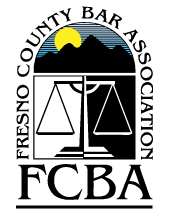Workers' Compensation for Hearing Loss: What Workers Need to Know
Hearing is a vital sense that many of us take for granted. However, in certain occupational settings, workers are exposed to conditions that can jeopardize their auditory health. While workers' compensation exists to support those injured on the job, many remain unaware of its applicability to hearing loss. This article delves into the intricacies of workers' compensation for hearing loss, highlighting its importance, the industries most affected, and the rights of workers.
Understanding Work-Related Hearing Loss
Hearing loss, often perceived as a gradual decline in the ability to perceive sounds, is more complex than it appears. At its core, it's a disruption in the way sounds are captured and processed by our auditory system. This loss can be attributed to various factors, ranging from genetic predispositions to external events.
There are different types of hearing loss. Conductive hearing loss, for instance, arises when there's a problem in the outer or middle ear, preventing sounds from reaching the inner ear. This could be due to ear infections, blockages, or even structural abnormalities. On the other hand, sensorineural hearing loss is rooted in issues with the inner ear or the auditory nerve itself. This type is often a result of aging, exposure to loud noises, or certain illnesses.
In the context of the workplace, one of the most common culprits behind hearing loss is prolonged exposure to loud environments. Industries like construction, aviation, and manufacturing often expose workers to noise levels that can be detrimental to their auditory health over time. Chemical exposure, too, can sometimes lead to hearing impairments, though such cases are rarer.
It's essential to recognize that hearing loss isn't always a sudden event. It can creep in slowly, making it imperative for individuals, especially those in high-risk jobs, to be vigilant about their auditory health. Regular check-ups and awareness of the early signs can make a significant difference in addressing and managing the condition.
The Prevalence of Occupational Hearing Loss
Occupational hearing loss is a significant concern that has garnered attention over the years due to its widespread impact. It's a condition that arises primarily from prolonged exposure to harmful noise levels in the workplace, making it one of the most common occupational diseases globally.
Several industries are notorious for their high noise levels. The construction sector, for instance, with its cacophony of machinery and equipment, poses a considerable risk to workers' auditory health. Similarly, the manufacturing industry, with its constant hum of machines, exposes workers to decibel levels that can be detrimental over extended periods. Aviation, mining, and even certain sectors of the entertainment industry, like live music production, also report higher instances of hearing impairments among their workforce.
Statistically speaking, millions of workers worldwide are exposed to noise levels that exceed the recommended limits. In the United States alone, the National Institute for Occupational Safety and Health (NIOSH) estimates that about 22 million workers are exposed to potentially damaging noise each year. Such statistics underscore the gravity of the issue.
The repercussions of this are manifold. Beyond the immediate health implications for the affected workers, there's a considerable economic impact. The cost of medical treatments, rehabilitation, and compensation claims, coupled with reduced productivity and the potential need for retraining or job reallocation, can be substantial for businesses.
Signs and Symptoms of Hearing Loss
Hearing loss can manifest in various ways, often depending on its cause, severity, and the individual's unique auditory system. Recognizing the early signs and symptoms is crucial for timely intervention and management. Here are some common indicators of hearing loss, accompanied by illustrative examples:
Difficulty Understanding Speech
People with hearing loss often find it challenging to comprehend words, especially when there's background noise or in crowded settings.
Example: At a bustling family gathering, John struggles to understand his cousin's stories, even though they're sitting right next to each other.
Frequently Asking Others to Repeat Themselves
This is a common sign, especially in the early stages of hearing loss.
Example: During a team meeting, Sarah repeatedly asks her colleagues to repeat their points, much to their frustration.
Turning Up the Volume
If you notice someone consistently increasing the volume on their TV, radio, or music player, it might indicate hearing difficulties.
Example: Tom's neighbors often complain about the loud volume of his television, but to Tom, it sounds just right.
Muffled Sounds
Sounds, especially speech, might seem distant or muffled, making it hard to discern specific words or tones.
Example: At a concert, Lisa feels the music sounds distant and unclear, even though she's close to the stage.
Tinnitus
This is a ringing, buzzing, or hissing sound in the ears, often noticeable in quiet settings. It's a common symptom associated with many types of hearing loss.
Example: Every night, when Melanie tries to sleep, she's disturbed by a persistent ringing sound in her ears, even though there's complete silence around her.
Recognizing these signs early on can lead to better management and treatment options. If you or someone you know exhibits any of these symptoms, it's advisable to consult an audiologist or ENT specialist for a comprehensive hearing assessment.
Prevention and Safety Measures for Workers
Preserving one's hearing is paramount, especially in environments where the risk of auditory damage is high. While some forms of hearing loss, like age-related decline, might be inevitable, many cases, especially those related to occupational hazards, can be prevented. Here's a look at some essential prevention and safety measures:
1. Regular Hearing Tests
Routine audiometric testing can help detect early signs of hearing loss. By identifying potential issues early, individuals can take steps to prevent further damage.
2. Use of Protective Equipment
In noisy environments, wearing protective gear like earplugs or earmuffs can significantly reduce the risk of hearing damage. These devices are designed to attenuate harmful noise levels while allowing essential sounds to be heard.
3. Limit Exposure
If possible, limit the duration and intensity of exposure to loud noises. Taking regular breaks from noisy environments can give the ears some respite and reduce the cumulative impact of noise.
4. Maintain Safe Noise Levels
Employers should ensure that workplace noise levels are within safe limits. This might involve modifying equipment, installing sound barriers, or changing work processes.
5. Educate and Train
Awareness is a powerful tool. Workers should be educated about the risks associated with excessive noise exposure and trained on how to use protective equipment correctly.
6. Avoid Ototoxic Substances
Some chemicals and medications can harm the auditory system. If working with such substances, ensure proper ventilation, use protective gear, and follow safety guidelines.
7. Maintain Good Ear Hygiene
Avoid inserting objects into the ear canal, as this can damage the eardrum or push wax further in, leading to blockages. If experiencing wax buildup, consult a professional for safe removal.
Filing a Workers' Compensation Claim for Hearing Loss
Navigating the intricacies of a workers' compensation claim for hearing loss can be a daunting task. However, understanding the process and knowing what to expect can make the journey smoother for affected individuals.
When an employee first notices signs of hearing impairment that they believe is related to their job, it's crucial to act promptly. The initial step involves seeking medical attention to get a professional diagnosis. An audiologist or an ENT specialist will typically conduct a series of tests to determine the extent of the hearing loss and its potential cause. This medical evaluation not only provides clarity about the condition but also serves as vital evidence when filing a claim.
Once the medical aspect is addressed, the employee should promptly notify their employer about the suspected occupational hearing loss. Open communication is essential, as it allows the employer to take necessary measures and aids in the documentation process. It's worth noting that there might be specific timelines within which an employee needs to inform their employer, depending on jurisdictional regulations.
Documentation plays a pivotal role in the claim process. From medical records detailing the hearing impairment to any evidence that can link the condition to workplace exposure, every piece of information strengthens the claim. In some cases, testimonies from coworkers or records of noise levels in the workplace can also be beneficial.
Given the complexities involved, many individuals opt to seek legal counsel. An attorney experienced in workers' compensation claims can provide guidance, ensuring that all necessary steps are taken and that the worker's rights are upheld. They can also assist in case of disputes, such as if the employer challenges the claim or if the compensation offered is deemed insufficient.
It's essential to remember that proving a direct link between hearing loss and workplace exposure can sometimes be challenging. Factors like age, pre-existing conditions, or exposure to loud noises outside of work can complicate matters. However, with thorough documentation, expert testimonies, and a clear understanding of the process, many workers successfully secure the compensation they deserve.
Conclusion
Occupational hearing loss is a pressing concern that underscores the importance of workplace safety and awareness. While preventive measures are paramount, it's equally crucial for affected individuals to understand their rights and the avenues available for redress. By taking timely action, seeking appropriate medical care, and navigating the workers' compensation process diligently, individuals can ensure they receive the support and compensation they rightfully deserve. Remember, your auditory health is invaluable; protect it with the same fervor you would any other aspect of your well-being.
Cole, Fisher, Cole, O’Keefe + Mahoney is Central California’s leading workers’ compensation and social security disability law firm. With over 30 years of successful experience, we are committed to securing maximum benefits for our clients in the Fresno, California area. Schedule a free consultation today.
© 2025 Cole, Fisher, Cole, O’Keefe + Mahoney
Making a false or fraudulent workers’ compensation claim is a felony subject to up to five years in prison, or a fine of up to $150,000 or double the value of the fraud, whichever is greater, or by both imprisonment and fine.






